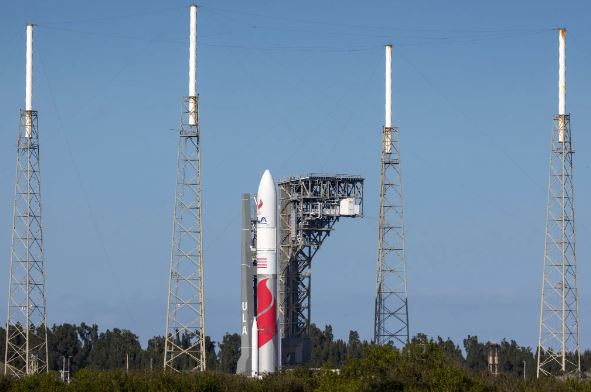A cutting-edge American rocket, named Vulcan, stands poised on a launchpad at Cape Canaveral, Florida, heralding a historic moment as an American spacecraft prepares for a lunar journey—marking the first such venture in over half a century. Constructed by the aerospace company United Launch Alliance (ULA), the Vulcan rocket is set to undertake its inaugural flight. Here’s a breakdown of key details surrounding this landmark mission.
Launch Details and Viewing
The scheduled launch time is 2:18 a.m. Eastern on Monday, with NASA Television coverage commencing at 1:30 a.m. The rocket was powered up at 3:58 p.m., and the countdown is progressing smoothly. Favorable weather conditions are expected, with an 85 percent chance of success. In the event of a delay to Tuesday, weather prospects diminish to a 30 percent chance of favorable conditions. Additional launch opportunities are available on January 10 and 11.
Destination: Sinus Viscositatis
Astrobotic Technology, based in Pittsburgh, is sending the Peregrine, a robotic spacecraft, to land in Sinus Viscositatis, Latin for the “Bay of Stickiness”—an intriguing region on the moon’s near side. As part of NASA’s Commercial Lunar Payload Services program (CLPS), Astrobotic will receive $108 million to transport five experiments, contributing to NASA’s goal of reducing the cost of lunar surface missions.
Significance of the Vulcan Rocket
The Vulcan rocket, a creation of United Launch Alliance, a collaborative effort between Boeing and Lockheed Martin, is set to replace the company’s existing rockets, the Atlas V and the Delta IV. ULA, established in 2006, has primarily been involved in launching classified military payloads for the U.S. government. Although reliable, its rockets were cost-prohibitive for most commercial clients. With the Vulcan, ULA aims to capture a larger share of the commercial market and has already secured over 70 Vulcan launches, including 38 for Amazon’s Project Kuiper—a satellite constellation for internet communications.
The United States Space Force requires two successful Vulcan launches before deploying any of its payloads. The upcoming launch serves as the first certification mission, with a potential second launch in April. Subsequent Vulcan launches this year could carry Space Force payloads into orbit if these initial flights prove successful.
Payload Controversy
Controversy surrounds the payload aboard Astrobotic’s Peregrine lander, with objections raised by the Navajo Nation regarding the inclusion of human ashes and DNA. Alongside the NASA experiments, the lander carries payloads for commercial clients, including Celestis and Elysium Space, companies specializing in memorializing individuals by sending their remains to space.
Buu Nygren, President of the Navajo Nation, voiced objections, emphasizing the moon’s spiritual and cultural significance to many Indigenous communities. Nygren called for a postponement of the launch, citing concerns about the profound disrespect associated with placing human remains on the moon.
NASA officials clarified during news conferences that they lack direct control over Astrobotic’s mission and payload selection. They acknowledged an upcoming intergovernmental meeting with the Navajo Nation to address concerns.
John Thornton, CEO of Astrobotic, expressed disappointment at the late emergence of objections, highlighting that the participation of Celestis and Elysium was announced years ago. Thornton conveyed a commitment to finding a mutually agreeable path forward with the Navajo Nation.
The impending launch of the Vulcan rocket signifies a critical step in advancing American space exploration capabilities. The mission’s destination on the moon’s surface and the ongoing debate surrounding its payload add layers of significance and complexity to this historic event. As the United States renews its lunar ambitions, the Vulcan rocket and Astrobotic’s Peregrine lander embody the next chapter in the nation’s space exploration narrative.

